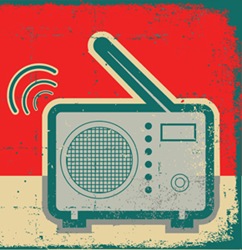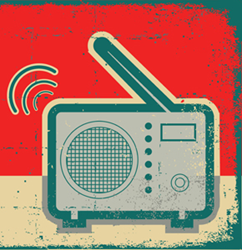Setting Standards for radio for nearly 90 years …The IEC marks World Radio Day 2015


(PRWEB UK) 13 February 2015
Radio remains to these days one of the most widespread and popular communication medium in spite of the growing popularity of television and, more recently, of the Internet. Unlike these it doesn’t require expensive equipment and, since the introduction of transistor radios in the mid-1950s, can even be independent from access to an electricity grid, a major benefit in many countries.
Radio depends entirely on electricity as a source of power for transmission and reception, and on electrical and electronic components for its broadcasting and receiving equipment. A multitude of IEC TCs (Technical Committees) and SCs (Subcommittees) develop International Standards for such components and systems.
In 1926, shortly after radio broadcasting was introduced, the IEC created TC 12: Radiocommunications.
Nowadays, IEC standardization work for radio broadcasting and receiving equipment is carried out by TC 100: Audio, video and multimedia systems and equipment, TC 103: Transmitting equipment for radiocommunication, and TC 108: Safety of electronic equipment within the field of audio/video, information technology and communication technology.
Radio reception can be subject to interference from a variety of sources, which include electrical equipment. As early as the 1930s it was decided to deal with the subject of radio interference at an international level. Following an ad hoc conference of interested international organizations held in Paris in 1933, CISPR (International Special Committee on Radio Interference) was created and first met in 1934.
CISPR is an organization within the IEC that brings together experts from radio regulatory authorities, test houses, manufacturers, other IEC committees, and organizations which are not associated with IEC National Committees. Its work led to the reduction in interference to radio (and later TV) broadcasts from domestic, industrial and commercial appliances, motor vehicles and lighting fixtures.
The radio frequency spectrum is a valuable and limited resource and seeking to make optimum use of it and to benefit from other advantages, such as the possibility of increasing the number of programmes in a given bandwidth and reducing transmission power, led to the introduction of digital radio broadcasting. This technology requires audio signals to be digitized and compressed before being transmitted.
Digital audio (and video) compression has been developed by MPEG (Moving Picture Experts Group) a working group of experts formed by IEC and ISO (International Organization for Standardization). The four international digital radio systems recognized by ITU (International Telecommunication Union), namely DAB/DAB+, DMB, DRM and IBOC, rely on digital audio compression Standards developed by MPEG.
They include MPEG-1 Audio Layer II or MPEG-2 Audio Layer II (or MP2), defined by ISO/IEC 11172-3:1993, various codec based on MPEG-4 Audio profile, such as HE-AAC (High-Efficiency Advanced Audio Coding) defined by ISO/IEC 14496-3:2009.
With its standardization work in the fields of radio equipment, prevention of radio interference and digital audio compression, the IEC has been at the forefront of developments in radio broadcasting for nearly 90 years and will continue to prove central to the vitality of the industry.
Find More Technology Press Releases